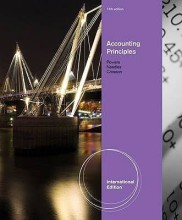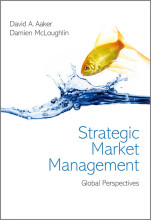Banking and the Management of Financial Institutions
16 important questions on Banking and the Management of Financial Institutions
The balance sheet of a commercial bank can be thought of a a list of sources and uses of bank funds. name 5 liabilities and 5 assets:
Liabilities
- sight deposits (directly withdrawal)
- time deposits (fixed term to maturity)
- loans form the central bank
- borrowings form other banks and corporations
- bank capital
Assets:
- reserves
- cash in process of collection
- deposits at other banks
- securities
- loans
- Other assets (mostly physical)
What is asset transformation, what is maturity transformation?
Maturity transformation: Recognising that depositors withdraw their funds at different times means that banks only need to hold a certain amount as receivers to meet day-to-day withdrawal and lend the rest in long-term loans Banks can thus accept short maturity deposits and convert them to long term loans..
Bank loan officers evaluate potential borrowers using what are called the 5 C's:
- Character
- capacity (ability to repay)
- collateral
- conditions ( in the local and euro economies)
- capital (net worth)
- Higher grades + faster learning
- Never study anything twice
- 100% sure, 100% understanding
What are the four primary concerns of a bank manager?
- liquidity management (enough ready cash to pay deposit outflows)
- asset management (operating under acceptable risk levels)
- liability management (acquire funds at low costs)
- capital adequacy management (maintain sufficient capital)
If a bank has ample receivers, a deposit outflow does not necessitate changes in other parts of its balance sheet. But if they don't have ample reserves and an deposit outflow, what can they do (4)
- borrowing from other banks or corporations
- sell some securities
- borrowing from the central bank
- reducing its loans and depositing the amount with the central bank (very costly because the consequences is customers leaving)
Excess receivers are insurance against the costs associated with deposit outflows. The higher the cost associated with deposit outflows, the more excess reserves banks will want to hold.
To maximize profits, a bank must simultaneously seethe highest returns possible on loans, reduce risk, and make adequate provisions for liquidity by holding liquid assets. Name four basic ways how banks achieve these 3 goals:
- banks will try to find borrowers who will pay high interest rates and are unlikely to default on their loans
- Banks try to purchase securities with high returns and low risk
- banks must attempt to lower risk by diversifying
- Banks must mangage the liquid it of its assets so that it can satisfy its reserve requirements without bearing huge costs.
Why did banks primarily focus on asset management? (2) How come liability management evolved?
- majority of sources of banks funds were obtained with sight (demand) deposits that by law could not pay interest (thus no competition amongst banks)
- interbank market was not well developed
With the development of the interbank market, banks no longer treated there liabilities as given.
Banks need to make decisions about the amount of capital they need to hold for three reasons:
- bank capital helps prevent bank failure
- the amount of capital affect returns for the owners (equity holders) of the bank
- a minimum amount of bank capital ( bank capital requirements) is required by regulatory authorities
ROE = ROA X EM
Net profit after taxes Net profit after taxes assets
------------------- = --------------------- X -------------
equity capital assets equity capital
Is there a trade off between capital adequacy an ROE?
How can you raise bank capital?
- Lower the assets
- Issue equity (common shares)
- decrease dividends
Name 6 ways banks try to overcome the adverse selection and moral hazard problem that make loan defaults more likely:
- Screening and monitoring (Screening, specialisation in lending, monitoring and restrictive covenants)
- Long-term customer relationships
- Loan commitments (a banks commitment to provide a loan)
- collateral and compensation balances
- Credit rationing (refusing to pay loans even if borrowers are willing to pay the stated interest)
Why do banks ration credit instead of charging higher rates?
Why do banks ration credit by providing borrowers with smaller loans than they need? Why not supply the market with the loans demanded?
With the increased volatility of interest rates that occurred in the 1980s, financial institutions became more concerned about their exposure to interest rate risk.
- What do GAP and Duration analyses tell a finical institution?
- How can financial institutions manage their interest rate risk?
- GAP and Duration analyses tell a financial institution if it has more rate-sensitive liabilities than assets (in which case a rise in interest rates will reduce profits).
- Financial institutions manage their interest rate risk by modifying there balance sheets but can also use strategies involving derivatives
What are types of off balance sheet activities? Do they increase risk?
Off balance sheet activities consist of trending financial instruments and generating income for fees and loan sales, all of which affect bank profits but are not visible on bank balance sheets.
- Loan sales (secondary loan participation)
- Generating income form fees (making foreign exchange trades, servicing mortgage backed securities by collecting interest, guaranteeing debt securities
Because these off-balance sheet activities expose banks to increased risk, bank management must pay particular attention to risk assessment procedures and internal controls to restrict employees form taking to much risk
The question on the page originate from the summary of the following study material:
- A unique study and practice tool
- Never study anything twice again
- Get the grades you hope for
- 100% sure, 100% understanding
































